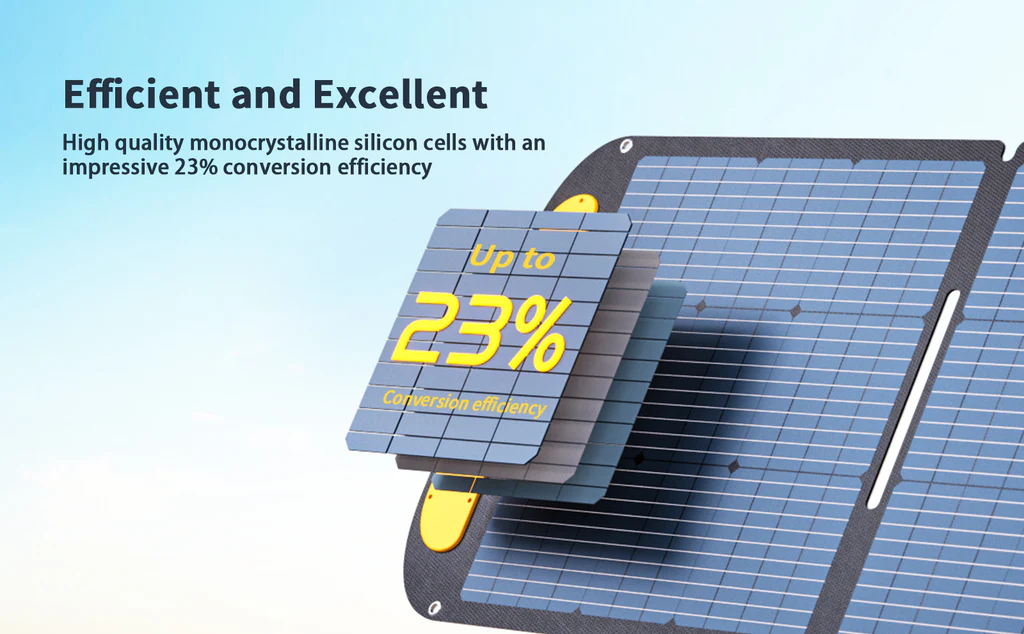
We know how solar energy is transformed into solar panels. However, the vital question is how to improve the efficiency of silicon. Making solar panels that use crystalline silicon (the most common type) more efficient is like squeezing more juice out of the same orange. Scientists and engineers are working on many things to make this happen. Here’s a breakdown:
1. Better Ingredients:
- Pure Silicon: Imagine using the cleanest sugar to make a cake. The better the sugar, the better the cake. It’s the same with silicon. Purer silicon means less energy is wasted inside the panel.
- Unique Silicon Recipes: Changing how the silicon is “mixed” (doping) and organized (crystal structure) can also help it work better.
- New Silicon “Sandwiches”:
- “Super-Smooth” Surface (HJT): Imagine putting a slippery coating on the silicon’s surface. This keeps electrons from getting lost or “stuck” so they can flow more easily to make electricity. This is called a heterojunction.
- “Multi-Layered Cake” (Tandem Cells): Stack different materials that are good at capturing different colors of light (like different layers of a cake). This allows the panel to absorb more of the sun’s energy. Think of it like using different-sized nets to catch different-sized fish – more fish caught means more energy.
- “Hidden Wires” (IBC): Imagine hiding the wires on the back of the panel. This allows more sunlight to hit the silicon without any cables’ shadows directly.
- “Magic Coatings” (Surface Passivation): Special coatings that make the surface of the silicon less “sticky” for electrons so they can move more freely. This is done with things like silicon dioxide or aluminum oxide.
2. Clever Design:
- “Tiny Pyramids” (Texturization): Making the surface bumpy with tiny pyramids helps trap sunlight so it doesn’t bounce away. Think of it like the dimples on a golf ball – they allow it to fly further and straighter.
- “Back Armor” (Back Passivation): Putting a special layer on the back to stop electrons from escaping.
- Better Wires:
- “Thinner Wires”: Making the wires thinner so they block less sunlight.
- “Taller Wires”: Tall and thin Wires conduct electricity well without blocking too much light.
- “More Wires”: Adding more wires spreads out the flow of electricity to avoid jams and reduce energy loss.
- “Hidden Wires” (IBC – again!): Yep, that’s important enough to mention again!
- “Stronger Glue” (Metallization): Using better methods to attach the wires to the silicon, ensuring they stick well and conduct electricity efficiently.
3. Catching More Sunlight:
- “Anti-Glare Screen” (Anti-Reflection Coating): A coating that stops sunlight from reflecting away, similar to the anti-glare screen on your phone or computer.
- “Sunlight Traps” (Light Trapping): Designing the surface with tiny structures that bounce the light around inside the panel, giving it more chances to be absorbed.
- “Mirror on the Back” (Back Reflector): A mirror-like layer on the back that reflects any light that passes through the silicon back for another chance to be absorbed.
4. Better Manufacturing:
- Precise Mixing (Doping): Carefully controlling how much other materials are mixed with the silicon, like adding just the right amount of salt to a recipe.
- Cleaning is Key: Make sure everything is squeaky during manufacturing, like a surgeon sterilizing their tools.
- Protective Shielding (Encapsulation): Use unique materials to protect the panel from the weather and UV rays, like sunscreen for your solar panel.
5. New Ideas on the Horizon:
- Quantum Dots: Tiny particles that can capture light in new ways.
- Middle Band: Adding a “middle rung” on the energy ladder inside the silicon allows it to absorb more types of light.
- Hot Carrier: Trying to capture energy from electrons before they lose it as heat.
- Making Multiple Electrons: Causing one photon to knock loose multiple electrons (right now, one photon usually only knocks loose one electron).
6. Improving the Whole Panel (Module Optimization):
- More Little Wires (MBB): Replace the thick busbars (main wires) with lots of thinner ones to collect more power.
- Overlapping Shingles (Shingled): Overlap the cells like roof shingles to pack more silicon into the same area.
- Cut Cells in Half (Half-Cut): Cut the silicon cells in half. This lowers the electrical resistance and reduces wasted energy.
- Better Protection (Encapsulation): Better materials seal the panel.
In short, improving solar panel efficiency is like a puzzle with many pieces. Scientists and engineers are working on all these pieces to make solar power cheaper, more efficient, and more widely available.
